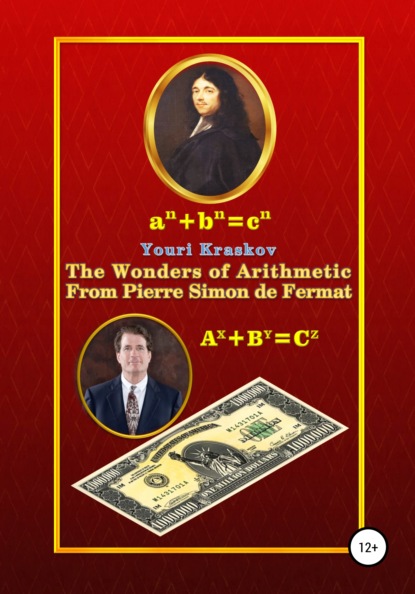По всем вопросам обращайтесь на: info@litportal.ru
(©) 2003-2024.
✖
The Wonders of Arithmetic from Pierre Simon de Fermat
Год написания книги
2021
Настройки чтения
Размер шрифта
Высота строк
Поля
<A; B
<B (5)
Now we get a situation similar to the one with numbers A, B only with smaller numbers A
, B
. Analyzing now (5) in the manner described above we will be forced to admit that there must exist numbers
A
=B
, where A
<A
; B
<B1 (6)
Following this path, we will inevitably come to the case when the existence of numbers A
=B
, where A
<A
; B
<B
as a direct consequence of assumption (1) will become impossible. Therefore, our initial assumption (1) is also impossible and thus the theorem is proven.[41 - The reconstructed proof of Fermat excludes the mistake made by Euclid. However, beginning from Gauss, other well-known proofs the Basic theorem of arithmetic repeat this same mistake. An exception is the proof received by the German mathematician Ernst Zermelo, see Appendix I.]
Looking at this very simple and even elementary proof by the descent method naturally a puzzling question arise, how could it happen that for many centuries science not only had not received this proof, but was completely ignorant that it had not any one in general? On the other hand, even being mistaken in this matter i.e. assuming that this theorem was proven by Euclid, how could science ignore it by using the "complex numbers" and thereby dooming itself to destruction from within? And finally, how can one explain that this very simple in essence theorem, on which the all science holds, is not taught at all in a secondary school?
As for the descent method, this proof is one of the simplest examples of its application, which is quite rare due to the wide universality of this method. More often, the application of the descent method requires a great strain of thought to bring a logical chain of reasoning under it. From this point of view, some other special examples of solving problems by this method can be instructive.
3.4. The Descent Method
3.4.1. A Little Bit of " Sharpness of Mind" for a Very Difficult Task
We will now consider another example of the problem from Fermat's letter-testament, which is formulated there as follows:
There is only one integer square, which increased by two, gives a cube, this square is 25.
When at the suggestion of Fermat, the best English mathematician of the time John Wallis tried to solve it, he was very vexed and forced to acknowledge he could not do it. For more than two centuries it was believed that Leonard Euler received the solution to this problem, but his proof is based on the use of "complex numbers", while we know these are not numbers at all because they do not obey the Basic theorem of arithmetic. And only at the end of the twentieth century Andrе Weil using the Fermat's triangles method still managed to get a proof [17].
It was a big progress because a purely arithmetic method was used here, however, as applied to this problem, it was clearly dragged the ears. Could Fermat solve this problem easier? We will also extract the answer to this question from the cache, what will allow us to reveal this secret of science in the form of the following reconstruction. So, we have the equation p
=q
+2 with the obvious solution p=3, q=5. To prove Fermat's assertion, we suppose that there is another solution P>p=3, Q>q=5, which satisfies the equation
P
=Q
+2 (1)
Since it is obvious that Q>P then let Q=P+? (2)
Substituting (2) in (1) we obtain: P
(P–1)–2?P–?
=2 (3)
Here we need just a little bit of “sharpness of mind” to notice that ?>P otherwise equation (3) is impossible. Indeed, if we make a try ?=P then on the left (3) there will be P
(P–4)>2 what is not suitable, therefore there must exist a number ?
=?–P. Then substituting ?=P+?
in (3) we obtain
P
(P–4)–4?
P–?
=2 (4)
Now we will certainly notice that ?
>P otherwise, by the same logic as above, on the left (4) we get P
(P–9)>2 what again does not suitable, then there must exist a number ?
=?
–P and after substituting ?
=P+?
in (4), we obtain P





